The Kanshudo Blog - older posts
Welcome to the Kanshudo blog! Here you can find older blog posts; the most recent ones are
here.

We hope you are enjoying our new Topic Lessons! We're continuing to add new lessons, as well as new games and features to the lessons themselves. Since launch we've already added three new lessons:
Introducing yourself
BEGINNER
The 23 wards of Tokyo
ADVANCED
うみ
海
のひ
日
INTERMEDIATE
If you've tried the Topic Lessons, you'll have seen several new games featured: Image Match, Kanshudo Cloze, and Audio Spell, as well as the new multiple choice quiz format. We're working on several more new games, and we are aiming to have all the games playable independently, with Boost, and with flashcard sets. Stay tuned!
If you have any feedback or suggestions on our games, we'd love to hear from you. Additionally, we're prioritizing new Topic Lessons according to requests, so if there's anything you'd like to see a Topic Lesson on, please let us know.
Since our last update we've added 14 new grammar points and POIs and updated 56 more.
Additionally, our partner Joy o' Kanji has published 11 new in-depth kanji essays:
- Joy o' Kanji essay on 肯
- Joy o' Kanji essay on 瘍
- Joy o' Kanji essay on 飽
- Joy o' Kanji essay on 蹴
- Joy o' Kanji essay on 臆
- Joy o' Kanji essay on 髄
- Joy o' Kanji essay on 嘱
- Joy o' Kanji essay on 殖
- Joy o' Kanji essay on 罵
- Joy o' Kanji essay on 弄
- Joy o' Kanji essay on 痘
Although it's largely 'behind the scenes', we are constantly working on our library of Japanese example sentences, which now contains 156,500 fully parsed, de-conjugated, and translated sentences. Our ultimate goal is to have at least one sentence for every word, conjugation, and even meaning in our dictionary. We're already well on the way - we have examples for the vast majority of the most useful words in Japanese. So far in 2022, we have added 1059 new example sentences, and updated an additional 6583!
We've recently added a new feature in the 'details' display of an example: when an example is linked to a grammar point, we include highlighting of the word(s) relevant to the grammar point. See here for an example (no pun intended!).
Finally, we've added a new Textbook Companion to accompany two of the books in the excellent Practical Kanji series: Practical Kanji 700 I and Practical Kanji 700 II, for intermediate learners. We highly recommend these textbooks, as the readings they include cover a range of topical and useful material in depth.
Happy Japanese studying!

We are very excited to introduce a huge new part of the Kanshudo system for learning Japanese: Topic Lessons. Lessons are available for all levels of learner, on topics of interest concerning the Japanese language, society, culture and geography.
Each topic lesson is unique, with a mix of video, audio, comprehension quizzes, readings and study games designed specifically to help you learn the lesson material effectively:
- New video and audio tools add additional immersion to your study.
- Our new instant search feature lets you look up any word or phrase without leaving the page.
- Our new text, picture and audio multiple-choice quiz format will help you develop your ability to comprehend material quickly.
- Three new games focus on key study techniques - Kanshudo Cloze challenges you to identify the correct word from similar alternatives, such as the right particle or the right counter; Audio Spell requires you to listen to words and phrases and then spell them out; Image Match asks you to match words with pictures that represent them.
- Lessons also feature many of our other games, including Word Match, Sentence Builder, Kanji Draw and more.
We're launching with 16 topic lessons, including beginner topics such as directions, colors and particles; intermediate topics such as an introduction to a very popular novel,
せかい
世界
からねこ
猫
がき
消
えたなら, the plum blossom, and Japanese festivals. There are advanced level lessons on the tea ceremony, and on the tremendously popular manga / anime, きめつ
鬼滅
のやいば
刃
. We will be releasing new topic lessons regularly from now on, and we'd love to hear any topics you'd like a lesson for.Topic Lessons are available in the STUDY menu by default along with the Beginner or Intermediate Lessons, or the Textbook Companion. (We've updated the lesson preference so you can now study as many lesson types as you like in parallel. You can edit your lesson preference in the new Lesson index, or in the study settings section of your Account page.) Topic Lessons will also appear in your study recommendations on your Dashboard. Additionally, you can simply search for lessons in Quick Search from the top right of any page - for example, try a search for directions.

As usual we've been hard at work making improvements and adding features to Kanshudo. To make it easier to find them, here's a quick summary!
Topic Lessons beta
The biggest news is that a major new feature we have been working very hard on is now in beta: Topic Lessons. We have about 30 intrepid learners testing the new lessons and format, and we really appreciate their help. If you would like to try the beta yourself, please let us know.
Additionally, if you have any social media expertise and are interested in helping us develop our social media strategy for the lessons, we'd love to hear from you. Please reach out.
The new lessons are a huge upgrade for Kanshudo - they introduce audio, video, a new 'instant search' feature for text, a new multiple choice quiz format, several new games (Kanshudo Cloze, Image Match, Audio Spell), and of course lots of new learning material. The lessons use an extremely flexible format: each one can include any combination of study material / games / audio / video in a custom order, so each lesson can be uniquely tailored to the content and the intended study level. We're very excited about the new lessons, and we hope you will be too!
Quick Study
Quick Study is a great way to study on Kanshudo: you can create quick tests from almost anything in the system. You can use Quick Study to find what you don't know and need to work on, or you can use it to reinforce material you already know.
We've added a few more features that make Quick Study even more powerful:
- You can now Quick Study cards in one or all of your flashcard sets based on date added (visit the Quick Study index and look in the flashcards section, or visit the details page for any of your flashcard sets and look in the Quick Study section).
- When you use Quick Study for a flashcard set, you can now modify your settings directly on the page.
- When you use Quick Study with words, you can optionally restrict by mastery level - this is a fantastic way to find words you don't know, or practice words you do.
Together, these features help you use the 'list-based' approach to study, which many learners find more effective than spaced repetition alone. (Kanshudo supports both learning approaches, as well as several other learning styles.)
Joy o' Kanji
We've made it easier to find essays from our partner, Joy o' Kanji. You can now search for essays directly within the Joy o' Kanji essay collection using any of the normal terms you use to search for a kanji. Additionally, when you click the JOK badge that indicates an essay is available, you will now see a new link to enable you to view the essay within the collection.
As usual, Joy o' Kanji has been very busy adding essays, and the following new essays have been produced since our last update:
- Joy o' Kanji essay on 匂
- Joy o' Kanji essay on 迅
- Joy o' Kanji essay on 眉
- Joy o' Kanji essay on 骸
- Joy o' Kanji essay on 脇
- Joy o' Kanji essay on 妥
- Joy o' Kanji essay on 辣
- Joy o' Kanji essay on 該
- Joy o' Kanji essay on 昧
- Joy o' Kanji essay on 跡
More miscellaneous improvements
- In the search options list (the list that appears below the search bar when you click the Quick Search icon on any page), there's now a link directly to your favorites.
- We've updated the 'Starting Japanese level' (in your Study settings) to be consistent with usefulness levels.
- The learn / review totals for flashcards are now consistent between the Dashboard and your flashcard index.
- You can now view words tested in a round of Word Match without leaving the game.
- Since our last update we've added 8 new grammar points and updated 40 more.
Happy Japanese studying!

Here's a quick round-up of new features and improvements we've made over the last couple of months. Of course, one of the biggest was covered in our last blog post – the new Kaneko Misuzu section of the Reading Corner, along with the new feature article on her life and works. However, we've also made a host of other improvements, so here's an overview.
Study recommendations and betas
We've added a few new features to our flashcard system:
- More options for forgotten cards: you can now create sets with only forgotten cards, and can now add forgotten cards directly back to review instead of study
- Create word flashcards by usefulness + your mastery level: now you can instantly pinpoint words you don't know or want to review
- Copy flashcards from one flashcard set to another
- Review flashcards across all sets: in the 'My flashcards' table (below the 'My flashcard sets' table in your flashcard index), there is now a review option, which will enable you to review all your cards without going through them set by set
- Reprioritize reviews: reviews piling up can be very disheartening, and we can now take care of that for you! The reprioritize function will adjust timing of your reviews so you have a manageable number each day. The reprioritize function will appear automatically on your consolidated flashcard view (accessible underneath the list of sets on your flashcard home page) if needed.
Suitability analysis
We've added a very useful feature to readings in the Reading Corner: a personalized analysis of the words and kanji in a reading, showing you precisely what you know and don't know, and enabling you to create flashcards or a Quick Study session based on your selection. The new 'suitability analysis' is in the 'Kanji and Vocab' section of each reading.
Joy o' Kanji essays
As always our partner Joy o' Kanji continues to produce high quality in-depth essays on individual kanji. In the last few weeks, the following new essays have been added:
- Joy o' Kanji essay on 袖
- Joy o' Kanji essay on 紺
- Joy o' Kanji essay on 渓
- Joy o' Kanji essay on 蓄
- Joy o' Kanji essay on 汎
- Joy o' Kanji essay on 蔽
Study recommendations and betas
Our AI study recommendations continue to improve, and we are working on a number of features related to how recommendations are chosen, as well as some new recommendations. If you have any suggestions about your study recommendations as you work on your study sessions on your Dashboard, please let us know.
We have several new games and a major new addition to the system approaching beta stage, so if you are interested in helping to test any of our betas, please let us know.

We are delighted to announce a major new addition to Kanshudo – the poems of Kaneko Misuzu, one of Japan's most famous and enduring children's poets. Kaneko's poems are a fixture in Japanese schools, and a wonderful way to study Japanese. We are very pleased to have partnered with the creators of Are You an Echo?, a bilingual anthology of Kaneko's works, to bring you some of her works on Kanshudo.
To learn more about Kaneko, start with our detailed feature article on her life and works, Welcome to the magical world of poetry by Kaneko Misuzu! When you're ready, visit the new Kaneko section of the Reading Corner, which features eight of her best-loved poems. As with every study piece in the Reading Corner, you can follow the Japanese at your own pace, with or without furigana or English, and you can quickly tag any words or kanji as favorites for later study.

In addition, you can now watch videos that are automatically synchronized with the poems. Following each sentence in Japanese as you hear it spoken is a great way to improve your listening comprehension and speed up your reading. Videos are currently available for two of the poems: Are You an Echo? and Bee and God.

Because reading material tends to incorporate kanji and words of all difficulty levels, we have added another great new feature: personalized suitability assessments. At the top of the 'kanji and words' section of each reading, you'll see a new table with a summary of the kanji and words used. The table shows you totals of kanji and words that you already know and that are new to you, as well as an assessment of how difficult the material you don't know is compared with your current level. This will help you decide which readings to focus on. We also use these suitability assessments when deciding which readings to show you in your study tasks on your [Dashboard](/dashboard), so you can just sit back and let Kanshudo choose readings for you automatically!
We hope you enjoy these wonderful short pieces by Kaneko Misuzu, and we'd love to hear your impressions!

We hope 2022 is treating you well so far! We've had a busy January, and we'll be announcing some big new features soon. In the meantime, here's an overview of several new features we've introduced recently.
Mastery heatmap
We've added a new way to understand your mastery scores for kanji / grammar / words, which will be especially useful to more advanced learners as it will help you identify gaps in your knowledge: your mastery heatmap. The heatmap shows your average mastery score for every usefulness level for kanji, words and grammar in the same chart.
Your personal mastery heatmap is a new section in your Dashboard (just after your Mastery map).
So now you have three ways to visualize your progress with Japanese:
- The mastery 'wedge' graphic at the top of your Dashboard, which shows your progress with kanji / words / grammar and study points within your current mastery level
- Your three mastery wheels (kanji, grammar and words). Each wheel has one ring for each usefulness level, and each ring shows counts of items by (your) mastery score
- Your mastery heatmap (also in the Dashboard), which shows average mastery score for each usefulness level
Flashcard improvements
- On the home page for any flashcard set, the colored counts of cards in your current study set, needing review, forgotten etc are now links, enabling you to view the actual cards with a single click.
- We've added a new 'retention rate' section to the statistics page for each set, so you can track your current study rate.
- In the main collections of words by usefulness level, there is a new button by each word enabling you to add a word to any flashcard set immediately. Very useful for picking up words you missed!
- We've improved the home page for each set by grouping some of the buttons into 'more action' pop-up menus.
Kanji keywords level-appropriate word setting
Sometimes a reading for a kanji is only used in words that are much less common than other readings. We've now added a setting to Kanji Keywords, on by default, to test you only on words that are a similar level of usefulness to the kanji itself.
Toggle for example sentence English translations
We continue to add more flexibility to the user interface so that you can customize the display as your Japanese progresses. You can now set English translations for example sentences to be hidden by default wherever they appear on Kanshudo. It's in the study settings section of your account page.
Looking for beta testers!
We are hard at work on a couple of big new features for Kanshudo, and we are looking for beta testers of all Japanese levels. If you'd like to get an early look at the features, please let us know.

Happy New Year to you all! We wish you the best for your Japanese studies in 2022.
We have some exciting plans for 2022, including new games, new study modes, new lessons, and more. In the meantime, here's a quick summary of some small improvements we've made over the last few weeks to flashcards and the component builder.
Flashcards improvements
We've made a few improvements to the flashcards system, including:
- Settings are now accessible in a popup on the details page for any flashcard set, so you can make quick changes without leaving the set
- We've added two new automatic card creation options, accessible from the details page for any set: you can now automatically create kanji cards for any kanji used in word cards in the set, and you can automatically create word cards for the key words for each reading of any kanji card in the set
- We've made the handling of forgotten (lapsed) cards more explicit: you now have a setting to prioritize forgotten cards, which is on by default. When you create a new study set, Kanshudo will choose any cards marked forgotten more than a day ago first, before continuing with your default study order choice (most useful items etc)
- The status color code for each card is now included with the card statistics.
- You can now remove a card from a set while studying (using a button on the card statistics popup).
- Mature cards you forget now have a maximum initial review period of a week when you learn them. (In other words, cards with a long review interval - greater than three weeks - will come up again sooner if you forget them and then re-learn them.)
Component Builder improvements
Kanshudo's Component Builder is, we think, one of the most sophisticated ways to look up a kanji available. The ability to draw each component of a complex kanji one by one is often the fastest way to look up a kanji by far. Plus with Component Builder you can draw a component, look it up by name, or find it in a list.
We've added a very useful improvement to the Component Builder: when you have entered one or more components and get a list of possible kanji, you can now view all of the candidates in Component Search - just click the search icon at the end of the kanji list.
Meanwhile, in Component Search, you can then quickly view your results back in Component Builder. In other words, you can now 'round-trip' between Component Builder (a great way to enter any single kanji in a search field) and Component Search (a great way to view lists of all kanji containing any combination of components).
You can access the Component Builder wherever you see the 部 icon, for example by clicking the Quick Search icon at the top right of every page. For detailed instructions, see our how-to guide.

Save 50% on a Kanshudo Pro subscription!
It's that time of the year ... time to be merry, time to celebrate the successes (the end?) of 2021, and time to plan for how to improve your Japanese in 2022!
Kanshudo is here to help! Kanshudo is the broadest and most sophisticated online platform for learning Japanese. Kanshudo will help you master kanji, hiragana and katakana, along with Japanese grammar and vocabulary, as fast, effectively, and enjoyably as possible! Kanshudo is used by over 90,000 Japanese learners, with [proven results](/testimonials).
This special holiday offer gives you 50% off one year of Pro access - unbeatable value at less than 10 cents per day! Pro access gives you unlimited use of:
- Our AI tutor and personalized study sessions
- Unlimited spaced repetition flashcards and learning games
- A comprehensive reference library of Japanese grammar
- The most comprehensive Japanese dictionaries online
- Multiple study and how-to guides for learning Japanese
- Optional access to over 400 in-depth kanji essays from our partner Joy o' Kanji
Every year Kanshudo gets better and better, and 2021 was no exception - we added pitch accent support, our new game Kanji Keywords, standalone Kanji Draw and Answer Type, and launched a revised and improved series of Intermediate Lessons, the perfect complement to our Beginner Lessons. For 2022 we have a long list of exciting improvements planned, all of which will be available automatically to Pro members.
Take advantage of this very special holiday offer now: Give me 50% off!

We are very excited to announce that our updated Intermediate Lessons are now officially out of beta*, and fully ready to use!
The new Intermediate Lessons provide the perfect stepping stone from beginner level Japanese through to high intermediate. Starting with a recap of all material covered in the Beginner Lessons, the lessons cover 1000 kanji. Additionally, the 55 lessons will introduce you to about 1500 of the most useful words using the lesson kanji. Each lesson also introduces a handful of critical grammar points, covering about 300 in total, illustrated with nearly 2500 example sentences. Completing the series covers all the material you need to pass the JLPT N2 (the second highest level).
You can study an intermediate lesson at any time by visiting the [lesson index](/ilessons). A link to the lesson index is in the top STUDY menu on every page. You can also find the lessons via the [Study index page](/study) in the INFORMATION AND HELP section of the bottom menu on every page.
The lessons use a great new format, with your mastery of the material clearly visible in the home page of each lesson. Each lesson includes a wide range of study activities, including a slideshow introducing all the material, flashcards and kanji drawing practice, as well as around ten fun and engaging study games. You can test yourself on the material at any time for study or revision, and if you know the material, you can take a 'Boost Test' to test up to the next lesson. This makes the Intermediate Lessons great revision material even for advanced students.
Key features of the new Intermediate Lesson series:
- 55 lessons covering 1000 kanji, 1500 key words, and 300 grammar points
- Covers all the material for JLPT N5 through N2
- Introductory slideshow covering lesson content with 'points of interest' and notes
- Flashcards, kanji drawing practice, 10 study games
- Visual summary of your mastery of the kanji, words and grammar in each lesson
- Three ways to finish a lesson - complete the lesson exercises, 'Test up', or just get your mastery of the content high enough using any of Kanshudo's study tools and games
If you are using the AI-generated study recommendations on your Dashboard to study on Kanshudo (the recommended way to study), you will automatically see recommendations for Intermediate Lessons as you progress. You can tell Kanshudo to focus your study tasks on the Intermediate Lessons by setting your lesson series to the Intermediate Lessons on your account page. You will start to receive intermediate lesson study recommendations automatically once your Japanese mastery level reaches 20.
* We removed the 'beta' tag from the lessons a few months ago once the lesson content and functionality were complete, but since then we have put a lot of time into improving [Grammar Match](/play/grammarmatch_first) to cover almost all of the 300+ grammar points in the lessons.
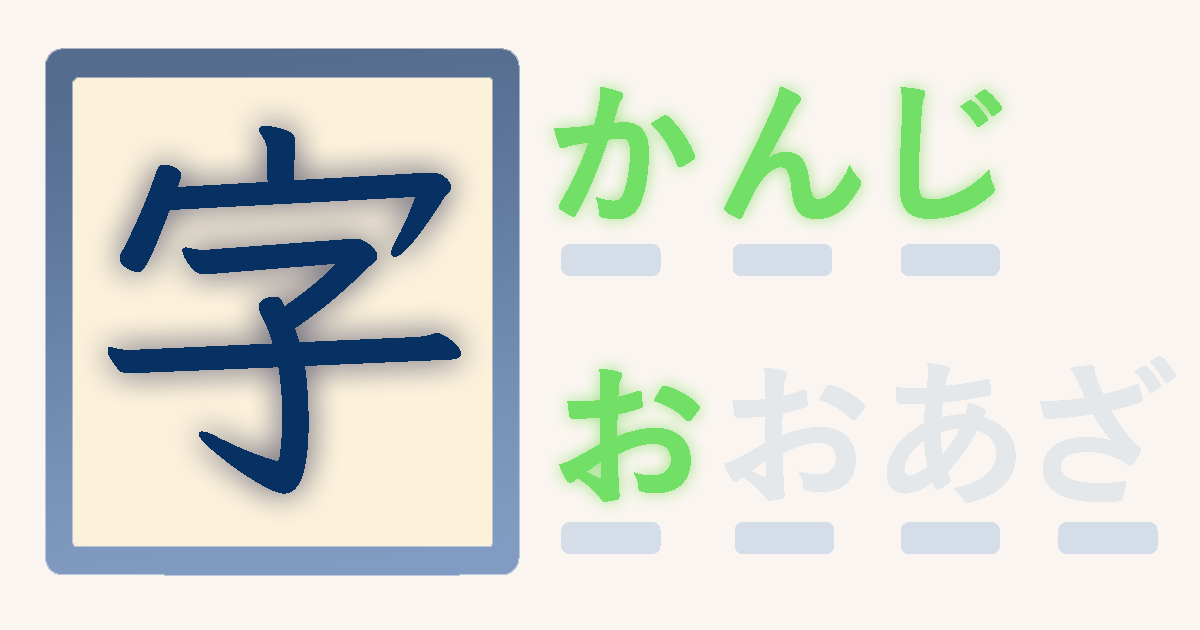
We're very excited to introduce our newest game: Kanji Keywords!
Kanji Keywords brings together two of the most important learning techniques for kanji in a super fun and engaging game format: keywords and active recall.
Keywords: the best way to learn readings of a kanji reading is to learn the most important words that use them. Kanshudo introduces you to a kanji's keywords in various ways - for example, we display the keywords for each kanji whenever you click a kanji icon in search results; you can also access a collection of all the most important words for all the readings in the Joyo kanji. Kanji Keywords tests your knowledge of these keywords directly.
Active recall: the best way to learn a word is to actively use it. Second to actual conversation, the best way to actively use a word is to recall it from a definition or translation and then write it out. Kanji Keywords requires you to type out the reading of each keyword.
Kanji Keywords will help you learn kanji and important Japanese vocabularly in tandem. Best of all, your games will increase both your kanji mastery and your word mastery scores, and will earn you study points for free Pro access to Kanshudo!
Play a few rounds of Kanji Keywords today.
Posted: 2021-10-22,
Tags:
usefulness
jlpt

Since we introduced the usefulness ranking for Japanese vocabulary four years ago, the most comprehensive analysis of Japanese usage available, we have made many improvements. We now use close to 30 ranking factors to determine how useful words are for Japanese learners in relation to each other, and which form of each word is most useful.
Words with a usefulness level of 9 or better are amongst the most useful 50,000 words in Japanese, and have a colored badge in search results, eg: .
Many useful words have multiple forms, and less common forms have a badge that looks like this: .
Of course, as we have added more data and analysis, the usefulness ratings of many words has changed somewhat. The badges update automatically, but our usefulness collections are a 'snapshot' of the list, and we have now updated the collections to reflect the latest data. You can still access the original collections if you need to. You can also search for words by usefulness level with the special ufn: keyword, for example: ufn:2.
The details of our methodology are set out in depth in our comprehensive how-to guide, How to prioritize Japanese words to study.
Finally, we have added a new 'shadow' JLPT badge. A standard JLPT badge indicates that a word appears in the Wikipedia JLPT vocab list, which in turn was based on the Tanos list. Standard badges look like this: .
However, in many cases, the word in the Wikipedia / Tanos list is not the most useful form of the word. We generally recommend that you learn the most useful form of a word first (and that form is most likely to be tested in the JLPT), so we have now added a lighter colored JLPT badge to the other forms of each word that appears in the JLPT list, which looks like this: .
See for example the entry for . The kana form is the one you will encounter most commonly, and the one we recommend you learn first. However, the kanji form 駄目 appears in the list for JLPT N3, even though the kanji 駄 is not one you would be expected to know until you reach JLPT N1 (the highest level).

Chopsticks are among the most useful and important implements in daily life in Japan - you literally need them to eat! Learn about the history of chopsticks, as well as the Japanese words and kanji used for them, in our new Point of Interest, はし, 箸 and chopsticks. Also learn how to make sure you are not accidentally talking about something entirely different when you use the spoken word!

The crane plays an outsized role in Japanese culture, and we are delighted to present a number of new resources to help you become acquainted with this central theme of Japanese art and literature!
Learn more about cranes and what they symbolize in our new Point of interest,
つる
鶴
cranes in Japanese culture. Then, work through the delightful fairy tale つる
鶴
のふえ
笛
(The Crane's Flute), our latest addition to the Reading Corner, with a new translation by our partner J.D. Wisgo. Finally, to really cement your knowledge of the kanji 鶴, read the Joy o' Kanji essay on 鶴.
Drawing a kanji by hand is one of the best ways to truly cement it in your memory. We are delighted to announce that Kanji Draw is now available as a standalone game, so you can test yourself and practice drawing kanji as often as you like!
Our new standalone Kanji Draw game has a study mode (with infinite lives) as well as a high score mode so you can compete with yourself. You can draw on kanji with a specific usefulness level, or you can choose kanji from a specific study set. You can also optionally restrict the game by your own mastery, so you can focus on learning kanji you don't know well, or testing yourself on kanji you do.
As with all Kanshudo games, you will earn study points for every round you play, and every kanji you draw correctly will improve your kanji mastery score.
You can find Kanji Draw from the PLAY menu at the top of every page, as well as in the KANJI & KANA menu at the bottom of every page. You can also find it in the Play index page and the site index, or you could just do a Quick Search for 'draw' or 'kanji games' from any page.
Kanji Draw will also appear as a study task on your Dashboard, along with all of Kanshudo's games and learning tools. Let Kanshudo drive you on the road to Japanese mastery!

We're delighted to announce a special June promotion with our partner Joy o' Kanji! Just post something nice about both Kanshudo and Joy o' Kanji on your preferred social network, and let us know. You will be entered into a prize draw, and one lucky winner will receive a whole year of Pro access to Kanshudo including Joy o' Kanji's kanji essays (see here for more details on our joint subscriptions).
This is open to existing subscribers, as well as those of you who have been looking for a good opportunity to subscribe, so don't delay! More details in the attached image.
Posted: 2021-05-27,
Tags:
read
literature

We're very excited to announce a new partnership with Japanese literature expert Bunsuke. Every few days we will be bringing you a short extract from a noted Japanese literary work, with translations and commentary by Bunsuke. The excerpts live in a new section of the Reading Corner which you can access from the front page. You can also access the Bunsuke section using the Quick Search function on the top right of any page - just search for , or , or etc. (This is often the quickest way to find any function on Kanshudo if you're not sure where it is in the menus.)
To start, we have extracts that will give you a flavor of the work of two of Japan's most famous authors - Haruki Murakami, and Natsume Soseki. We'll be adding a couple of new extracts per week. You can also subscribe to Bunsuke's email newsletter ⇗ for even more content - Bunsuke releases new extracts daily, and delivers them right to your inbox!
Here's a direct link to the new Bunsuke section of the Reading Corner so you can get started right away!
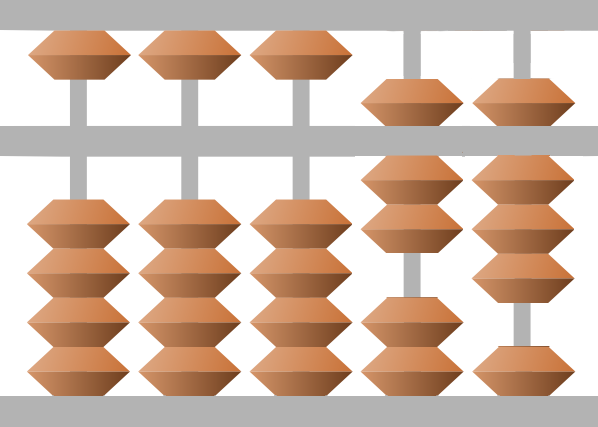
Learning to count in Japanese can be tricky, and we've added some new tools to make it as easy as 1-2-3!
Japanese uses a system of 'counters' - suffixes designated for counting specific objects. We've collected the most common counters in counters for objects and other things, and you can read more about the general approach in Japanese numbers and counting.
Knowing a counter is only half the story - you have to know how to read the combination of a number and counter. We've added a new special keyword "counter:" to enable you to search for all uses of a counter so you can quickly find out how the reading changes as it is combined with numbers. Try this search to see it in action: counter:本.
Dates and time are actually just special examples of the counter system. For details, see our overview articles, Japanese dates and telling the time in Japanese.
If you'd like to investigate counters even more thoroughly, you can use the following search to find all counters in Japanese: search for all counters.
If you're curious about the image attached to this blog post, you can read more in our Point of interest, counting with a そろばん (Japanese abacus).
Posted: 2021-05-11,
Tags:
pitch
pronunciation
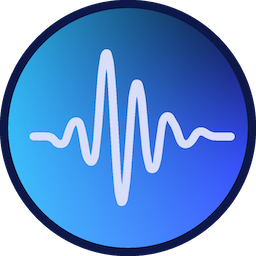
We're very excited to announce a major new addition to Kanshudo: support for pitch accents, a core component of Japanese pronunciation.
We've created a brand new how-to guide, the Kanshudo definitive guide to Japanese pitch accents. The guide provides a comprehensive overview of pitch accents. It will introduce you to the way accents work in Japanese compared to other languages, help you understand how to determine the correct accents of words and sentences, show you some commonly confused word groups, and show you how to look up accents in Kanshudo and Japanese dictionaries. The new guide also includes a wealth of fantastically clear native speaker audio samples recorded for us by a professional Japanese radio announcer.
Additionally, we've added pitch accent data and diagrams to over 150,000 words in the word dictionary - for example, try this search: .
The guide contains common examples of words with the same reading but different accents, and in addition, we've also added a new collection of all ~600 or so words within the most useful words in Japanese which have multiple accent forms. Click here to view the full collection.
We've also extended and improved our basic guide to Japanese pronunciation, and added native speaker audio samples to that too.
You now have everything you need to learn how to sound like a true native Japanese speaker!

We've been busy over the last few months! We've been working on many different areas of the system, so even regular users will probably find some surprises in this roundup. Here's a quick summary of the new content and features on Kanshudo.
New icons!
We've updated several icons, including the trusty favorites star , usefulness , JLPT , mastery , flashcard edit , details view , and more.
Favorites
We've made a major improvement to the favorites system: you can now designate a flashcard set as your storage location for favorites. This means that as soon you click the favorites star , you immediately have a flashcard in your preferred set!
You can change the location at any time, so if you switch to another flashcard set, any search result that has a flashcard in that set will show up with a shaded favorite star.
New Joy o' Kanji essays
We've added 11 great new in-depth kanji essays from our partner Joy o' Kanji:
16 new grammar points and points of interest
Remember you can always access automatically-updated lists of recently-added and recently-updated grammar articles from the grammar library home page.
Flashcards
We've made a lot of improvements to the flashcard system, and we're still working on a couple more, so rather than summarize those here we'll put them all together in another blog post soon.
Intermediate lessons
The beta of the new intermediate lesson series is progressing very well - one tester even went so far as to say "I think the new intermediate lessons are the best thing to happen to this platform". The functionality is now nearly complete, and we are doing our third or fourth pass through the new lesson content! If you would like to try out the new intermediate lessons yourself, please let us know.
More miscellaneous improvements
- You can now hide kanji and word 'quick views' after you've clicked on the kanji or word to show them
- The Joy o' Kanji popup which shows when you click a JOK badge now contains helpful links to your previously downloaded essays and your available credits
- You can now restrict example search by sentence difficulty
- We've added a new kanji keyword search to help you identify key components by how frequently they are used: (this identifies all components that are used 1-100 times in Joyo kanji).
- A new download button lets you download examples directly from quick view.
- You now have the ability to ignore study tasks.
- You can now override the system recommended kanji study set. The system will check whether you've done this before giving you the same recommendation again.
- You can now see your mastery level for words, kanji, and grammar points directly in word search / kanji search / grammar search - you will see a mastery badge such as next to each result.
- You can manually edit your mastery for kanji, words and grammar points wherever you see the mastery badge - just click it to pull up an edit view.
- Search history now loads much more quickly, and uses an 'infinitely expanding' list rather than pages.
Posted: 2021-01-29,
Tags:
games
vocabulary

We are excited to introduce our latest standalone game: Answer Type!
Answer Type is a great way to practice and test your Japanese vocabulary: simply type the readings of as many words as you can. Choose words based on your target usefulness level, and try to beat your high score! Click here to try it out.
Answer Type is one of several Kanshudo games designed to build your Japanese vocabulary in a fun and entertaining way - you can also try Word Match and Word Quiz as standalone games, and others Kana Search and Term Find which appear in Boost.
Answer Type will also appear from time to time as a study task when you work on your daily study session!
Posted: 2021-01-10,
Tags:
flashcards

If you have a lot of flashcards or a lot of flashcard sets (or both!), you may have noticed that the counts of cards to learn or review have gone up or down. Don't worry - this is not a bug! We just completed a major update to the way flashcards work, and it affects the counts.
Previously, when you added a flashcard for a word / kanji / grammar point / example to a set, a new card would be created, with new study data. Over time, this could lead to many copies of a card - in some cases 15+ for some of our most active users - each at a different stage. This was not efficient in various ways - for example, it could interfere with review cycles, or mean that you were doing more reviews than you needed to. Any notes you added to the back of cards were only visible on the card you added them to, not the copies.
We've now updated the system such that whenever you add a flashcard for an item to a set, you actually create a reference to an existing card if there is one - and the study data is shared. So if the card is ready for review, it will appear in the 'review' count for both sets. If it is unlearned, it will appear in the 'learn' count for both sets.
Another benefit of this change is that you no longer need to worry about managing duplicate cards yourself - duplicates within a set are automatically prevented, and duplicates between sets are not actually duplicates, just references to the same card. Any notes you added to your cards have been consolidated and will be visible whichever set you see the card in. (Note that cards created for Beginner Lessons often use the notes field to display different inflections of a word - those have now been consolidated as well.) You can use the new 'shared cards' function for any flashcard set to see and manage cards which are also used in other sets.
This improvement is part of several major updates to the flashcard system that are currently in progress - we are working on a new improved UI, and several great new features.

Save 50% on a Kanshudo Pro subscription!
As this tumultuous year comes to an end, let's look forward to a fresh start and new challenges in 2021. How could better Japanese enrich your life next year?
The satisfaction of an impressive personal accomplishment ...
A magical trip (real or virtual) to the Olympics ...
An exciting new career opportunity ...
Greater access to Japanese people and culture ...
A magical trip (real or virtual) to the Olympics ...
An exciting new career opportunity ...
Greater access to Japanese people and culture ...
Kanshudo can help you realize your Japanese dreams! Kanshudo is the fastest and most enjoyable way to learn written Japanese. Master kanji, hiragana and katakana, along with Japanese grammar and vocabulary. Kanshudo is effective, fast and fun.
Act now to set yourself up for success in 2021: Kanshudo's holiday sale gives you 50% off Pro membership for an entire year! Only $30 - less than 10 cents per day - brings you full access to our AI tutor and personalized study sessions, the most comprehensive Japanese dictionaries online, unlimited flashcards, a wealth of learning games and exercises, and many more great features. Include access to in-depth kanji essays from our partner Joy o' Kanji, also for 50% off!
Take advantage of this very special holiday offer now: Give me 50% off!
Posted: 2020-12-11,
Tags:
flashcards
favorites

'Favorites' are one of Kanshudo's most useful features - just click the icon next to any kanji, word, grammar point or even example sentence to store it in your 'favorites bucket'.
We've made it even easier to work with favorites:
You can now use any flashcard set to store your favorites, instead of the default favorites bucket.
Add (and remove) favorites in the same way, but now whenever you create a new favorite, it is immediately available in the flashcard set you choose.
You can change your storage location quickly and easily whenever you want. This provides a really useful way to switch between study sets, and makes it much easier to manage your flashcards. For example, you could designate one flashcard set for the novel you're reading, and another for your current lesson. When you change your flashcard storage location, the items in the set you choose will have a icon in search results, so you can easily identify what you already have in there.
To change your favorites storage location, use the link in your account page, or the link from your favorites home in the main menu. Here is a direct link.
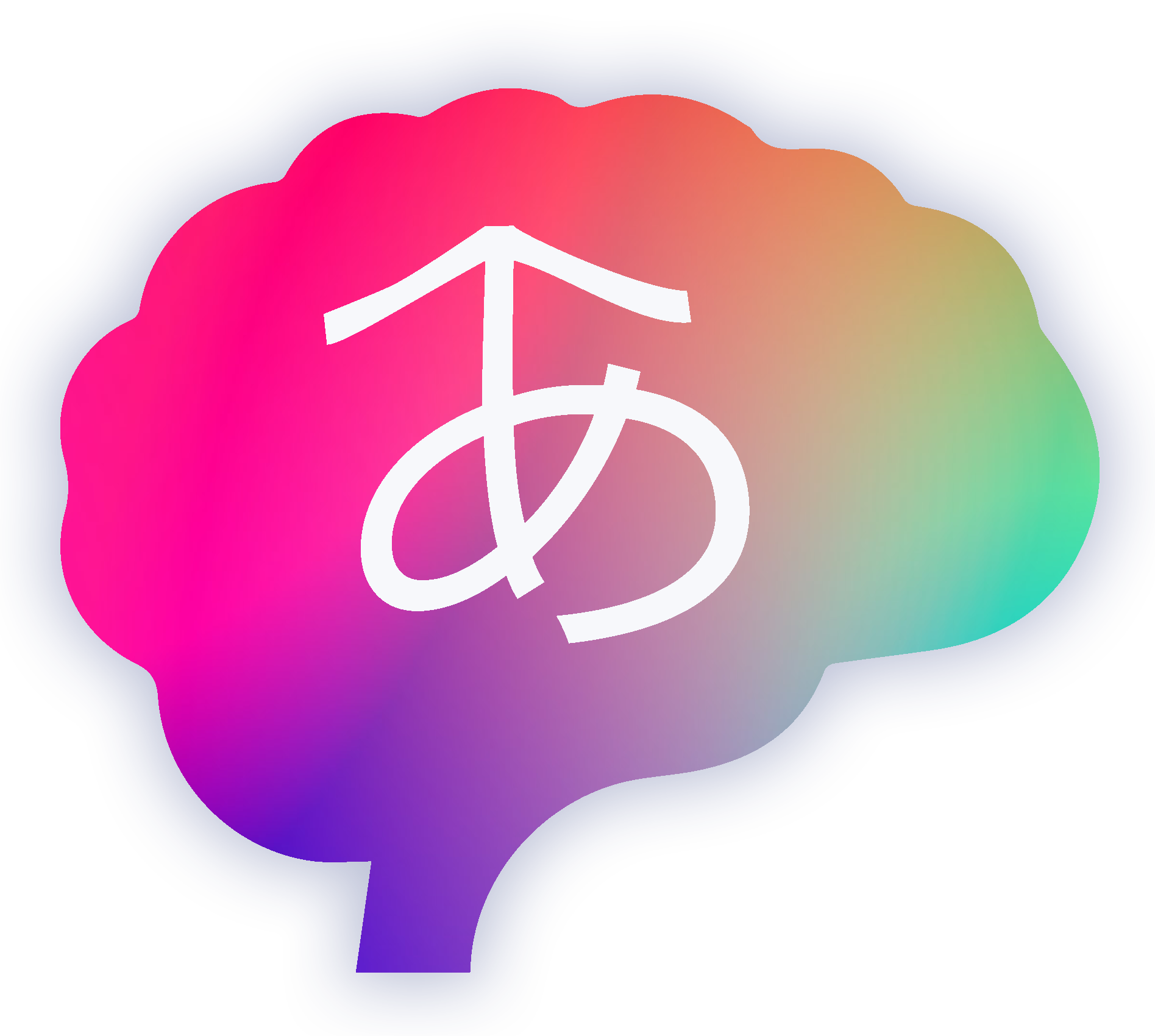
We are delighted to announce our most advanced learning tool yet: Kanshudo Boost.
Boost is a fantastic learning aid as well as testing tool. It combines multiple learning modes using a wide variety of different games and exercises, and integrates your knowledge of kanji, words, and grammar. Boost is Kanshudo's most powerful tool for building and testing your knowledge of Japanese.
Boost is also incredibly flexible. You can take a Boost to help you learn almost anything in the Kanshudo system - individual kanji, words, grammar points, even example sentences. You can use Boost to test yourself on all content with a specific usefulness, and lesson content in our upcoming Series 2 Intermediate Lessons. You can also use Boost as a way to learn or test yourself on your own flashcard sets!
Most Boost types can be generated from the Boost home page, which is accessible from the main STUDY menu. You can also generate Boosts anywhere in the system wherever you see the icon. You will also start to see Boosts appear as study tasks on your Dashboard.
Try a Kanshudo Boost today and supercharge your Japanese studies!
Posted: 2020-11-21,
Tags:
whatsnew

Recently we've added several new grammar points, including negative + ようにする try not to do, verb stem + ましょ short polite volitional form, and ます form + ように making a wish, as well as new 'points of interest' on 梅の花(うめのはな) ume blossoms and the somewhat less cheerful topic of dying in Japanese, bringing the reference library to 817 articles on Japanese grammar.
We've also added several new in-depth kanji essays from our partner Joy o' Kanji, including Joy o' Kanji essay on 梅, Joy o' Kanji essay on 凡, Joy o' Kanji essay on 勘 and Joy o' Kanji essay on 怨. There are now 392 essays available, each one providing unparalleled depth and background on a single Joyo kanji.
The interface for viewing your Kanji Challenge status has got a whole new look, with key features closer at hand, and we've also updated the study sets themselves to improve the sequencing.
We are very close to formally launching Kanshudo Boost, our most ambitious learning tool yet. Boost combines games and exercises of varying degrees of difficulty to test and train you on almost any material in Kanshudo, including kanji, words, grammar, and example sentences. You'll start to see Boosts appearing in your study recommendations soon, and we're starting to add links around the site. The beta is now public, and you can try it out here. Please let us know what you think!
One of our biggest projects currently is a major overhaul of the Intermediate Lessons, with new content, more games and exercises, and a completely new user interface. We're excited to announce that the new lessons are now in beta, so if you are working through the current Intermediate Lessons or just completing the Beginner Lessons, let us know if you would like to join the beta program.

One of the hardest aspects of Japanese for learners is that inflections can be combined to create complex forms. It is very common to see a word which combines two grammatical inflections, and not uncommon to see as many as three or four (for example, see the last search in the list below). Understanding how forms are combined can be a challenge.
For some time we have been including analysis of inflected forms in our example sentence library, and recently we introduced the inflection showcase to help you practice forming any inflection for any word. Today we are excited to announce another great new feature which will help you understand and use inflections:
Inflected forms are now included within search results
To see this in action, try the following quick search: . First, the search results show you the base form the word is derived from,
はな
話
す (the 'dictionary form'). Next, you'll see an analysis of exactly how the inflected search term is built from the dictionary form, along with links to the relevant articles in the grammar library: first we make the progressive form (話しています), and then we put it in the past tense (話していました).Here are a few more searches to try:
For more information on Kanshudo's tools for helping you learn and use inflections, see our 'how to' guide, Understanding inflections and conjugations.
For a visual summary of your personal progress with Japanese grammar, check our your personalized Grammar mastery wheel.
Our Grammar library is a searchable reference resource with about 800 articles on Japanese grammar, graded by usefulness / JLPT level, complete with many thousands of examples.
For practice, try our grammar games, including Grammar Match, Sentence Builder and Sentence Complete.
For study recommendations specific to your personal situation, check out your Dashboard.

Quick Study is one of Kanshudo's most powerful features: you can use it to quickly review material to identify what you need to work on, or to test yourself on material you already know.
What is Quick Study?
Quick Study is rather like 'disposable flashcards'. Quick Study presents material with all the same study options as Kanshudo's advanced spaced repetition flashcard system - you can view Japanese to English or the reverse, display furigana or not, and optionally type in your answers.
However, unlike flashcards, items in Quick Study disappear when you have learned them, and by default, won't affect your mastery scores. So if you like, you can use Quick Study without affecting anything in the system. However, you can customize Quick Study in various ways - for example, you can have it create flashcards for items you don't know, or update your mastery scores based on your answers.
What can I study?
Quick Study works across the entire system, so you can quickly study:
- Kanji, kana, words or grammar points
- Kanji components
- Your favorites
- Your flashcards - Kanshudo can identify cards you've recently forgotten, cards you are finding difficult to learn, or just create random study sets across all your flashcards
Settings and options
Quick Study is highly customizable. Some of the options you can modify include:
- Automatically create flashcards for items you get wrong
- Include a button to manually create a flashcard for any item
- Include YES / NO buttons of the front of cards so you can very quickly jump to the next
- Drop cards immediately or wait until you know them
- Update your mastery scores based on your answers
- Keep score of your correct and incorrect answers
Quick Study has two preset modes, Learn and Test, which automatically configure these options for you.
How to launch Quick Study
Quick Study is accessible from the main STUDY menu at the top of every page. You will also be prompted to do a Quick Test from time to time in your study recommendations. You'll also see Quick Study or Quick Test buttons around the system, easily identifiable by the icon. Here's a link to the Quick Study home page so you can check it out now.
Posted: 2020-10-19,
Tags:
reading

We are delighted to announce three new additions to the Kanshudo Reading Corner, which together comprise a delightful story by
おがわ
小川
みめい
未明
(Ogawa Mimei), a prolific writer of short stories known in Japan as the founder of modern children's literature.Ogawa's stories are excellent learning material for modern students of Japanese, as his use of language is varied but not overly complex, and he rarely uses constructions not used in modern Japanese. While billed as 'children's stories', the themes often deal with the passage of time and life, and provide appeal and interest for adult readers.
The story these three pieces are based on,
がっき
楽器
のせいめい
生命
, The Life of a Musical Instrument, describes the life and times of a magical musical instrument. We've classified it as Intermediate, but the grammar is not too complex, and students of all levels might want to give it a try.We are greatly indebted to J. D. Wisgo for allowing us to use his excellent translation of this story, and we hope to be able to bring you more material by Ogawa and J.D., so if you like this piece, please let us know! For more information on J.D.and his work, head over to the Reading Corner and look for the three new pieces - here's a direct link to the introduction of the first part.
If you are following Kanshudo's study program by working on the study tasks our Japanese teaching AI recommends for you on your Dashboard, you will automatically see suggestions to read these pieces.
Posted: 2020-09-22,
Tags:
games
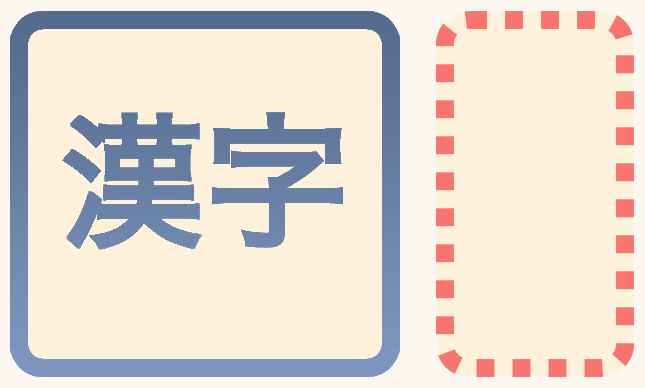
We're pleased to announce that you can now play Kanshudo Sentence Builder for a specific grammar point, just as you can with Kanshudo Grammar Match! Currently you can play Sentence Builder with 103 grammar points at various levels of difficulty, and we are adding more daily.
Sentence Builder is a challenging game, because it tests your understanding of sentence structure as well as vocabulary. It's a fun way to solidify your understanding of grammar in context. Each sentence you build automatically affects your grammar mastery for all linked grammar points (not just the one you are playing for. You also earn study points for every sentence and every game you complete.
To play Sentence Builder for a specific grammar point, visit the grammar point in the grammar library, and then click the PLAY SENTENCE BUILDER link. For example, try it with the ので grammar point. To reset the setting, just choose another grammar point, or visit your Sentence Builder settings and click the RESET button.

Have you ever wanted to check how an irregular verb conjugates? Or quickly see how an inflection differs for two Japanese verbs? Or just wanted a quick refresher on the inflections of an adjective or verb?
Our new Inflection showcase makes it extremely easy to look up standard inflections. You can select a given part of speech such as a class of adjective or verb, and see either basic or advanced inflections with a single click. You can then jump to articles in our Grammar library on any of the inflections, or look up all words in Japanese tagged as the part of speech you've selected.
The Inflection showcase makes it super easy to learn and test your knowledge of both standard and advanced conjugations for verbs, adjectives and more.
Kanshudo's tools for helping you learn Japanese grammar
For a visual summary of your personal progress with Japanese grammar, check our your personalized Grammar mastery wheel.
For more information on Kanshudo's tools for helping you learn and use inflections, see our 'how to' guide, Understanding inflections and conjugations.
Our Grammar library is a searchable reference resource with about 800 articles on Japanese grammar, graded by usefulness / JLPT level, and complete with many thousands of examples.
For practice, try our grammar games, including Grammar Match, Sentence Builder and Sentence Complete.
For study recommendations specific to your personal situation, check out your Dashboard.
Kanshudo is your AI Japanese tutor, and your constant companion on the road to mastery of the Japanese language.
To get started learning Japanese, just follow the study recommendations on your Dashboard.
You can use Quick search (accessible using the icon at the top of every page) to look up any Japanese word, kanji or grammar point, as well as to find anything on Kanshudo quickly.
For an overview, take the tour.
